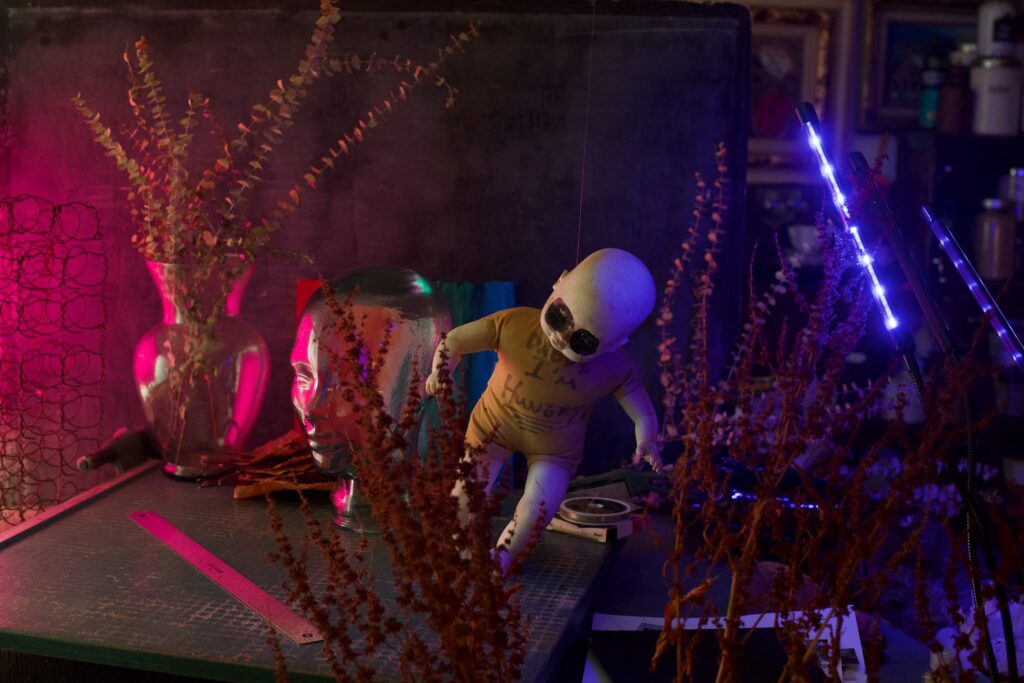
This is my very first blog post in over two decades. I’m excited to monitor my growth as I continue to develop different skill sets throughout the program.
Prior to starting this project, I had no experience in creating a GIF of any kind. And to further complicate matters, I wasn’t entirely sure of the direction I wanted to take. Not having any notable illustrative skills made me have to depend on my photography and videography toolsets.
The challenges
Once I developed a basic concept and a generalized direction, the real difficulties began. How was I going to capture different positions of my doll, with limbs that didn’t help to keep it upright? Did I want to create a backdrop, and if so what would it look like? What layers and textures did I want to include? How would I light the scene? Would I use gels (the answer, it turns out was a big fat YES!)? This part of the project took roughly an entire evening of trial and error, hit and miss. Frustrations eventually leading to triumph and a sense of satisfaction.
At first, I thought I was through the hardest part of the project, that going forward things would be just a matter of following a few directions. Sheesh was I wrong.
As I progressed with the assignment, a few obstacles arose, each requiring further Googling and researching. I had 176 frames that I wanted to combine into my GIF, each PNG roughly 4 MB. Way too large for EyeJack. I had to devise a way (using Automator) to batch reduce the size of each file. Next I had to discover a legitimate way of making an mp3 from a YouTube video, then cropping that mp3 in Quicktime to fit the length of my GIF. That worked, but then the trim in Quicktime created a .mov (not a .mp3). So on to the web again I went, to find a way to convert a .mov into a .mp3. Bingo! Almost there. Even the upload to EyeJack came with its own issues. But eventually I was able to solve each of those issues, and was successful at completing the project. At least, I think I was (despite my thoughts below).
Things to consider
Lacking the necessary skills to adequately translate the fullness of my ideas can be frustrating. Seeing it in my mind, but not knowing how to use the tools properly. Or even what to look for in my research to help me make my vision become a reality. I know that feeling like a fish out of water is part of the process, and I eagerly look forward to a day when that feeling isn’t quite as pronounced. But in the meantime, I most definitely feel a sense of accomplishment in completing this challenging yet ultimately very intriguing assignment.

